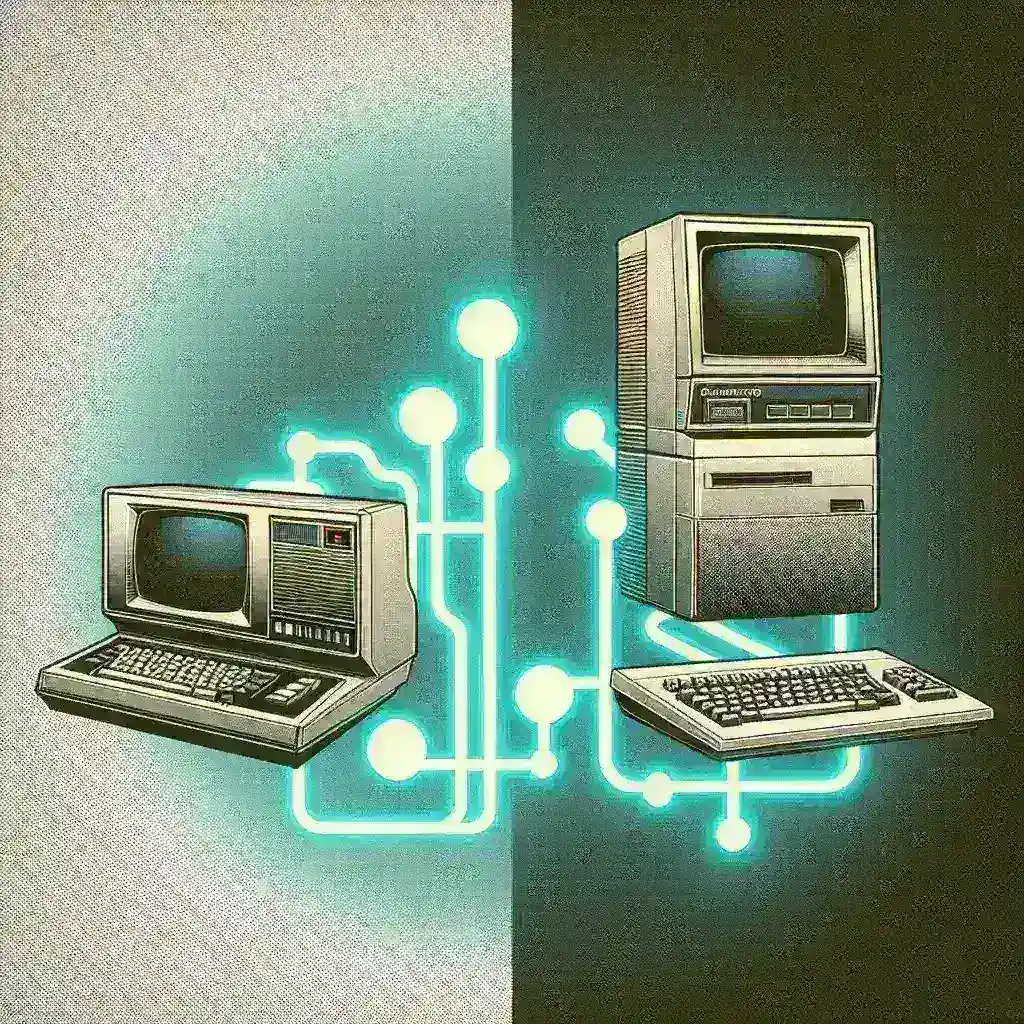Introduction
The world of personal computing underwent a significant transformation in the 1980s, marked by innovative designs and the burgeoning demand for portability. Among the key players in this evolution was the Kyotronic 85, a machine that paved the way for another iconic device—the TRS-80 Model 100. This article explores how the Kyotronic 85 contributed to the development of the TRS-80 Model 100 line, examining its features, historical context, and lasting cultural impact.
The Birth of the Kyotronic 85
Released in 1983, the Kyotronic 85 was one of the first portable computers that combined a compact form factor with practical functionality. It featured a full-sized keyboard, a monochrome display, and the ability to run various applications, making it a versatile tool for business professionals and tech enthusiasts alike.
Specifications and Features
- Processor: Zilog Z80, a popular choice for many early computers.
- RAM: 64KB, expandable to support more complex tasks.
- Storage: Dual-sided floppy disk drives, which allowed for more data management.
- Display: 80×24 character LCD, offering a clear and manageable interface.
Innovative Design
The design philosophy of the Kyotronic 85 revolved around portability and efficiency. Weighing just under 5 pounds, it included a built-in handle and was compact enough to fit into a briefcase. This focus on user experience made it an appealing choice for individuals who needed to work on-the-go.
How the Kyotronic 85 Influenced the TRS-80 Model 100
The Kyotronic 85 set a precedent for portable computing that greatly influenced the subsequent development of the TRS-80 Model 100. Released in 1983 by Tandy Corporation, the Model 100 was designed to be a user-friendly, affordable alternative for both personal and professional use.
Adapting Successful Elements
One key aspect where the TRS-80 Model 100 drew inspiration from the Kyotronic 85 was its keyboard layout. Tandy engineers recognized the importance of a comfortable typing experience, leading to the incorporation of a full-sized keyboard that mirrored the layout of the Kyotronic. This consideration greatly enhanced user satisfaction and productivity.
Enhanced Portability
Building upon the compact design of the Kyotronic 85, the TRS-80 Model 100 further refined the concept of portable computing. Weighing only 4 pounds, its lightweight structure made it even easier to transport. Furthermore, its battery life of around 20 hours allowed users to work without the constant need for power outlets, a game-changer in the realm of mobile computing.
Historical Context and Market Demand
The early 1980s marked a time of rapid technological advancement. Businesses were beginning to recognize the value of computers, leading to an increased demand for machines that could easily be transported and used in various environments. The success of the Kyotronic 85 highlighted this trend, as it appealed to professionals who needed computing power in a portable package.
Market Trends
According to industry reports from the time, sales of portable computers were on the rise, with the market growing by more than 50% annually. This trend created fertile ground for Tandy’s entry with the TRS-80 Model 100, which effectively filled the gap for affordable, high-quality portable computers.
Technical Advancements in the TRS-80 Model 100
The TRS-80 Model 100 boasted several advancements over the Kyotronic 85, making it a formidable competitor. Notably, the Model 100 featured:
- Integrated Software: A built-in word processor, terminal emulation software, and basic programming capabilities, providing users with a comprehensive suite right out of the box.
- Connectivity: Options for connecting to modems and printers, which enhanced its functionality significantly.
- Durability: A robust design that stood up to the rigors of travel, making it reliable for the mobile workforce.
Reception and Commercial Success
The TRS-80 Model 100 received critical acclaim upon its release, praised for its design, features, and usability. Within a short time, it became one of the best-selling portable computers of its era. Sales figures indicated that over 100,000 units were sold within the first year of release, a testament to its popularity and the effectiveness of its design.
Cultural Impact
The influence of the TRS-80 Model 100 extended beyond mere sales figures. It became a symbol of the mobile computing revolution, used by journalists, business executives, and educators alike. This widespread adoption not only validated the need for portable computers but also encouraged further innovation in the field.
Legacy of the Kyotronic 85 and TRS-80 Model 100
The legacy of the Kyotronic 85 and the TRS-80 Model 100 continues to resonate in today’s technology landscape. Both devices played a pivotal role in shaping the design and functionality of modern laptops and portable computing devices.
Lasting Influence on Portable Computing
Today, we see the influence of these early models in the design of contemporary laptops and tablets, which prioritize portability, battery life, and user-friendly interfaces. The concepts pioneered by the Kyotronic 85 and TRS-80 Model 100 laid the groundwork for the devices we rely on today.
Conclusion
The journey from the Kyotronic 85 to the TRS-80 Model 100 exemplifies how innovation in the tech industry can create a ripple effect, leading to widespread changes in consumer technology. As we continue to evolve technologically, the foundational work of these early portable computers remains a critical part of our history. The Kyotronic 85 not only influenced the TRS-80 Model 100 line but also set the stage for the future of portable computing—an influence that is still felt today.







Leave a Reply